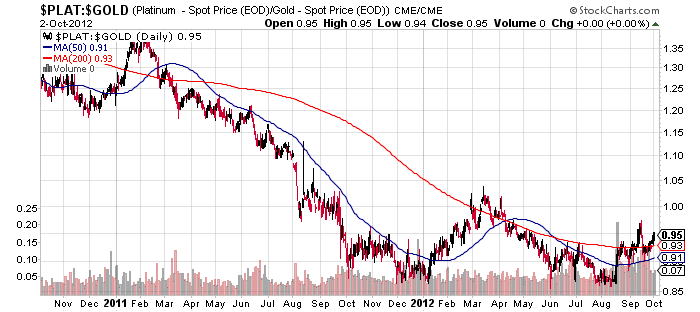People who are in or near retirement are baffled. They have reached the point where they are supposed to be able to live off the income from their investments. But with interest rates at stubbornly low levels, due mostly to a stubborn Federal Open Market Committee, there is little investment income to be had.
The average rate on a one-year bank certificate of deposit, the traditional repository for many retirees because they’re federally insured, is about 0.23%. If someone with $500,000 in savings is trying to live off that, well, good luck. That’s $1,150 a year, not much of a supplement to the Social Security checks.
Who ever thought we’d long for the days of a 5.25% bank savings account, which not so long ago was where we merely parked money while looking for something better? It was, ho-hum, better than sticking it under the mattress. But today we’d kill for that kind of federally insured return. Alas, it’s not there. It’s not even in sight.
Today, conservative investors — near-retirees, actual retirees and anyone else averse to risk — are seemingly left with unsavory choices: Safe investments with paltry returns, less safe investments with better-than-paltry returns, or something in-between.
And perhaps there is, in fact, “something in-between” that plucks the most appealing features of the two extremes, at least for part of an individual’s portfolio.
The two hazards of fixed-income investments, of course, are rate risk and credit risk. Now, we appear to be on the verge of rising interest rates and an improving economy. With a better economy, and particularly when starting from a protracted recent period of historically low rates, the present, superseding challenge would therefore seem to be rate risk as opposed to credit risk.
So how to navigate these waters in a manner that optimizes returns while minimizing risk to principal? This is precisely the challenge I’ve recently faced in my managed portfolio, which seeks to maximize return without taking excessive risk.
If one accepts the earlier assumption about the impending direction of rates, then the logical choice is to concentrate one’s money in short-duration investments. Duration, of course, is a measure of a fixed-income security’s sensitivity to interest-rate changes. The higher the duration, the greater will be the investment’s reaction to rate movements.
If, for example, a bond fund has an average duration of five years, then one might expect a 1% rise in rates to result in a 5% decline in the price of the fund. It’s an inverse relationship, so it works the opposite way when rates decline.
Therefore, “short-duration” implies that the security’s volatility is minimized. That’s what an investor, especially a conservative investor, wants when rates are expected to rise, because as rates go up bond prices fall. But “short duration” also implies low relative yield; the market does not reward risk-averse investors.
Still, for a conservative investor, the priority is capital preservation, and short-duration investments support that priority. So, above all, let’s keep durations short. That means within that particular universe we have to look for something that provides better than an infinitesimal yield.
Trust me, your pessimism is understood. But remember: Our scenario reasonably assumes an improving economy, and therefore the other fixed-income hazard, credit risk (due to any potential defaults of the underlying holdings), can ostensibly be more easily absorbed. Here are three vehicles that I’m using to meet these ends:
• PowerShares Senior Loan Portfolio (BKLN). This is a bank-loan fund that seeks to track the S&P/LSTA U.S. Leveraged Loan 100 Index. The credit risk is akin to that of junk bonds, but — and this is a big “but” — the rates on the underlying business loans are reset every 30 to 60 days. That means that the duration of the fund is nearly zero. And it yields about 4%.
• Guggenheim BulletShares 2015 High-Yield Corporate Bond ETF (BSJF). This is a basket of corporate bonds with an average credit quality of “B,” which means they’re speculative. But two things mitigate that risk somewhat: 1) the underlying bonds have an effective maturity of no later than December of next year, so there’s only a two-year span remaining in which any of them can default, and 2) it is diversified by holding 112 securities (as of Sept. 30, 2013), with no single bond constituting as much as 3% of the portfolio. The average duration is 2.44, and the yield is about 4.1%.
• Guggenheim BulletShares 2014 High-Yield Corporate Bond ETF (BSJE). This is the 2014 version of the preceding recommendation. Its average duration is a low 1.31, and the yield is about 3.3%.
Nominal yields of 3%-4% aren’t great by historical standards. But with inflation just a hair above 1%, there’s nothing wrong with a real return of 2%-3%, near the historical average for investment-grade corporate bonds. No, the three investments above are not investment grade, but because they are short-term with date-certain maturities, the credit risk is limited to a period of only a year or two — in a likely improving business environment.
DISCLAIMER: The investments discussed are held in client accounts as of December 31, 2013. These investments may or may not be currently held in client accounts. The reader should not assume that any investments identified were or will be profitable or that any investment recommendations or investment decisions we make in the future will be profitable. Past performance is no guarantee of future results.



